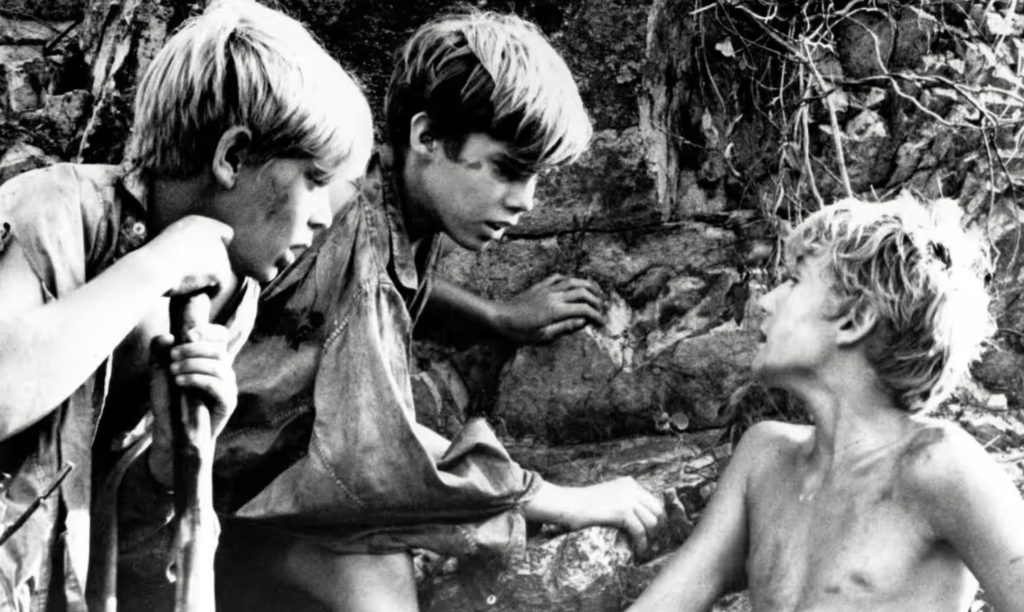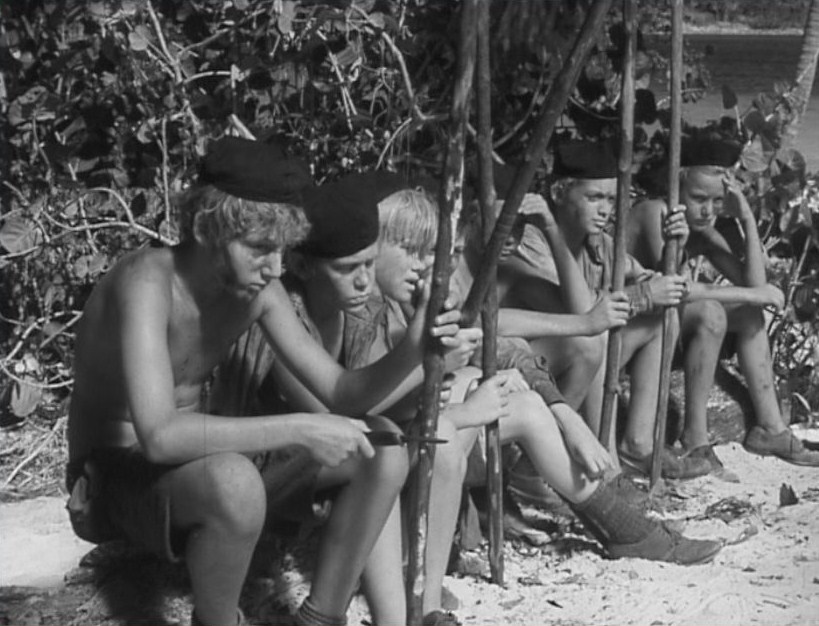This week, the subject I want to focus on is the child. For literature and cinema, the child and childhood have been interesting topics that deserve treatment. Let alone books and movies that see the child as a symbol or object of innocence, I would like to look at an example that deals with the concept of “evil” since childhood is the period in which people act most impulsively. In this sense, I wish to focus on Lord of the Flies as it is a very powerful and striking example.
The Lord of the Flies is a work that was fictionalized as a novel and then adapted for the big screen twice. I will talk about the book and the first film adaptation.
Lord of the Flies, published in 1954 by Nobel Prize laureate Sir William Golding, aroused great repercussions in literary circles. Lord of the Flies also received a rather negative reaction, as approaching the terrible nature of man through children made it an easy-to-read novel.
To see the child in our minds, with their innocence and naivety, as a “little person” who has not been tamed yet, has no knowledge of social and moral rules, and has insufficient conscientious inquiries, is a heavy matter to think about.
It raises the question that one is fundamentally bad. It is understandable that the novel caused anger and astonishment in society because of its disturbing nature. However, the shock caused by the murder of two children in England, close to the date of publication of the novel, made the novel interesting.
Irish academic and writer Terry Eagleton in his book “On Evil” asks the reader why the murder committed by the child is particularly frightening. And he continues: “If Freud is right, children have a much weaker superego and moral sense than their adults.

From the 1963 film of William Golding’s Lord of the Flies.
“That’s why it’s surprising that such horrific events don’t happen more often. Maybe the kids are killing each other all the time but they don’t let us know.”
In this matter, which Eagleton deals with in his own humorous language, neither he nor Golding insists the child is bad. They open up new areas of reflection on the evil of human nature and the nature of evil through the child. However, going back to the novel, Golding is very close to the idea that evil is in our nature, with a narrative that is increasingly dark.
In the novel, we see that on the basis of human evil, his desire for leadership and power is decisive. The book tells the struggle of a group of children who fell on a deserted island and survived, first their struggle for survival, and then their struggle for existence and power.
In the novel, which is one of the best examples of a symbolist narrative, there are children and objects that represent bullying and aggression, common sense and reason, democracy and freedom. In addition, symbols were used to represent religious power.
With a psychological reading, the mental map of man and the nature of man; The first film adaptation of the book, which describes the shaping of society and power relations with a sociological reading, was in 1963. The British film is directed, written, and edited by Peter Brook.
The other film adaptation of the film, which was very successful with its faithfulness to the novel and impressive narration, was produced by Harry Hook. Hook’s 1990 film was not as successful as the first film adaptation.
The first film, shot in black and white, offers a truly impressive cinematic experience due to the very successful transfer of the dramatic elements.
It is possible to say that the pessimistic atmosphere in the novel is conveyed quite successfully here as well. I definitely recommend the book and the movie, which look at the concept of evil through the child, thus making it more difficult to question one’s own nature.
Both book and movie are available on the Amazon website.
